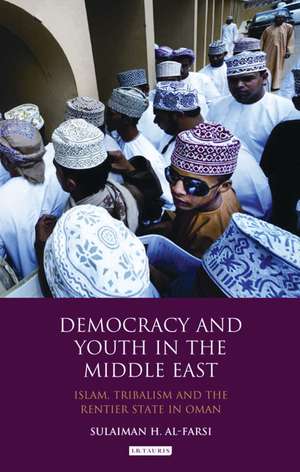Democracy and Youth in the Middle East: Islam, Tribalism and the Rentier State in Oman
Autor Sulaiman Al-Farsien Limba Engleză Hardback – 27 mai 2013
Preț: 714.51 lei
Preț vechi: 1027.68 lei
-30% Nou
Puncte Express: 1072
Preț estimativ în valută:
136.72€ • 148.98$ • 115.21£
136.72€ • 148.98$ • 115.21£
Carte tipărită la comandă
Livrare economică 23 aprilie-07 mai
Preluare comenzi: 021 569.72.76
Specificații
ISBN-13: 9781780760902
ISBN-10: 1780760906
Pagini: 280
Ilustrații: 4 figures, 1 table
Dimensiuni: 138 x 216 x 28 mm
Greutate: 0.48 kg
Editura: Bloomsbury Publishing
Colecția I.B.Tauris
Locul publicării:London, United Kingdom
ISBN-10: 1780760906
Pagini: 280
Ilustrații: 4 figures, 1 table
Dimensiuni: 138 x 216 x 28 mm
Greutate: 0.48 kg
Editura: Bloomsbury Publishing
Colecția I.B.Tauris
Locul publicării:London, United Kingdom
Notă biografică
Sulaiman Al-Farsi holds a PhD in Politics and International Studies at the University of Leeds.
Cuprins
Chapter 1: IntroductionChapter 2: The Context of Democratisation in the Arab WorldChapter 3: The Omani ContextChapter 4: The 'Top-Down' Model: Challenges to its SuccessChapter 5: The Traditional Model: Theology of Ibadism and ModernityChapter 6: The 'Bottom-Up' Model: Ambitions and ChallengesChapter 7: Discussion and Conclusions








